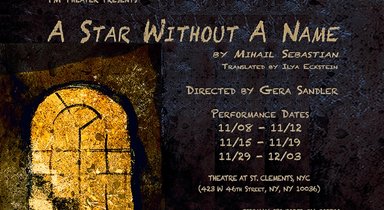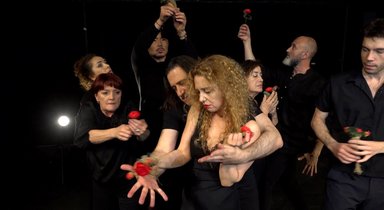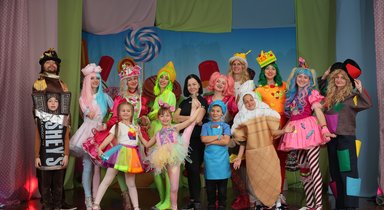Culture
State Of The Concert Industry in 2022
By Stephan Cartello • Jan 12, 2022

Live music in 2020 was a tsunami of fear and confusion, dragging the whole business out to sea. 2021 was a desperately needed life raft, but at year’s end, it’s still a shaky one.
“When things got better and vaccines started to reach 60% of the population, I heard things like ‘Whoa, this will be the greatest renaissance in the history of entertainment,’” said Randy Phillips, the former CEO of AEG Live who produced Kanye West’s feud-breaking concert with Drake last week at the L.A. Coliseum. “But there’s hidden danger in those numbers too. Sales for a bunch of arena shows were soft, and that’s a function of the fact that people aren’t rushing indoors yet. Layer in Omicron, and I’m still cautious.”
The live industry had gone completely dark for a year and a half: Beloved venues closed, crews lost livelihoods and artists feared for their careers. Concerts were unofficially resurrected in May, when the Los Angeles Philharmonic performed a comeback show for essential workers at the Hollywood Bowl. Next came outdoor festivals, indoor dance clubs and long-delayed arena dates.
2021 was supposed to be an exhilarating comeback, and in many ways, it was. At year’s end, live music is definitively back — but not without notes of caution.
The Delta wave clearly modified the sense that COVID-19 was behind. Venues scrambled to adapt to fast-changing rules and best practices around vaccine mandates, mask policies and slipping public trust.
“The live music industry has clearly suffered throughout COVID-19,” said Scott Clayton, co-head of global music for United Talent Agency. “We finally saw daylight with the vaccination rollout, but the road back to live has still been a rough ride. One positive test can derail an entire tour.”
“The live business overall is very healthy,” Clayton continued. “There is no substitute for the communal experience of live shows, and there is a huge demand from fans to see their favorite artists perform. That said, there is still concern around variants and the number of people who remain unvaccinated.”
But after summer’s euphoria, the concert industry was faced with the Omicron variant, which appears more infectious than even Delta, and could potentially dampen the live music business yet again.
“The live business is as healthy as it has ever been, when the shows are able to come off in a safe way,” said Ray Waddell, president at Oak View Group, parent company to the live-business trade publication Pollstar. “This year, we saw that people are willing to put up with a lot of inconveniences just to be able to see shows. How long that will last, we’ve yet to see.”
On paper, at least, the return to stages is already in full bloom. Pollstar’s year-end estimates track a global concert industry that rebounded from a dismal $18.9 million in first-quarter gross revenue to $1.34 billion in the final quarter of the year. Tours from the Rolling Stones, a reunited Los Bukis, Harry Styles and the Hella Mega package tour of Green Day, Fall Out Boy and Weezer drove huge turnout from the summer into winter.

Based on the end-of-2021 stats, Pollstar expects the top 100 tours of 2022 to sell around 65 million tickets, which would put them 12% above even the windfall year of 2019. Adele’s upcoming Las Vegas residency is likely to break records.
“After the tremendous losses of 2020, the industry has no taste for another shutdown. There would be extreme resistance to that,” Waddell said. “There is so much work planned that there are very real shortages of gear, labor, transportation and available dates. Even beyond the economics, I feel like there is newfound respect for the value of the live thing, from fans to artists and those who work in the business,”
But fans and artists remain cautious. Stevie Nicks canceled her 2021 dates out of pandemic-surge fears. Live Nation’s stock, having rebounded from 2020 lows, wiped out most of its fall 2021 gains in just the last month. NBA game cancellations, in a grim echo of 2020’s pandemonium, are again spooking indoor crowds. Some concerts — especially by boomer-friendly acts — experienced no-shows from cautious ticket holders, as much as 20% in some cases.
Outdoor festivals are a bright spot, but Randy Phillips, the former CEO of AEG Live worried that “people are just not rushing back into theaters. That portends to where we are with arena and smaller venue shows. I’m not seeing the strength and resiliency of box office for many headline artists.
“I get why festivals are flourishing, because there’s space outdoors,” he continued. “But you’re starting to see new restrictions in the U.K. Even if isn’t lockdowns again, the fear of it slows growth, and it will take a little time before consumer confidence is restored.”
While the Delta wave initially gave pause to fans and promoters who had hoped for “Summer of Love"-style delirium, outdoor festivals like Lollapalooza and HARD Summer proved to be relatively safe environments for fans to cut loose. It was a build-the-plane-as-you-fly-it kind of scramble for acts to secure tour dates, though.
“We had to rebook dates three or four times,” Rüfüs Du Sol’s Lindqvist said. “It was really challenging to lock in outdoor venues with double the bands going out.” The band required vaccines and masking for its crew. “I can’t imagine the juggling it took for our tour and production managers,” he said.
“The logistical challenges of touring during this pandemic have been massive,” UTA’s Clayton agreed. “We were all figuring out the safety protocols for the first time. It was very difficult for promoters to hire enough stagehands and venue staff, and those issues became magnified for tours that were requiring vaccinations.”
After two years, when even industry giants like Coachella surrendered to COVID’s evolving week-to-week threats (it’s now scheduled for an April 2022 return), new events like Goldenvoice’s This Ain’t No Picnic and the inaugural L.A. edition of Barcelona’s Primavera Sound are locked in for next year.

“Relief, that would be the word,” said Alfonso Lanza, the co-director of Primavera Sound, which will make its long-postponed L.A. debut in September at L.A. State Historic Park in Chinatown, with headline sets from Lorde, Nine Inch Nails and Arctic Monkeys. “We tried in 2019, then 2020, then 2021, and it finally looks like 2022 is our year.
For local acts who waited out the pandemic as beloved independent venues closed or lost staff, many in the scene desperately sought work elsewhere or reimagined their artistic futures.

The new year of live music will likely be neither fully liberated from the pandemic nor as dreadful and unsure as the last two years have been. Omicron is all but guaranteed to bring a new wave to the U.S.; vaccine boosters and new medicines could keep it navigable for the live industry though. Few in the industry or government seem eager to reinstate shutdowns around live events.
No one in live music has any illusions about the possibility that things can go haywire. But even the most grizzled promoters leave 2021 with some cause for optimism for next year.
“We’ll need to adapt to any measures, but the feeling is almost normality. Big fests have happened in the states. Maybe by the time of our fest in September, it’ll be fully normal,” Primavera Sound’s Lanza said. “We’re humans — we went two years without live experiences, and nothing substitutes for that.”
Save
Share
Comment


